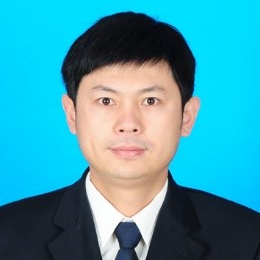μ-TAS: A Themed Issue in Honor of Professor Andreas Manz
A special issue of Micromachines (ISSN 2072-666X). This special issue belongs to the section "B:Biology and Biomedicine".
Deadline for manuscript submissions: closed (29 February 2024) | Viewed by 7090
Special Issue Editors
Interests: µTAS; immunoassays; biomimetic; digital microfluidics; microbiology; algorithm; optoelectronics; surface modification and bonding technique; micropump; genetics; PCR; microfabrication; MEMS
Special Issues, Collections and Topics in MDPI journals
Interests: single-cell analytical chemistry; microfluidic technology; high-throughput genome sequencing technology; biophysics
Interests: flow mechanics; lab on a chip; micro/nano sensor; micro/nano-heat transfer
Special Issues, Collections and Topics in MDPI journals
2. Department of Microelectronics, Faculty of Electrical Engineering, Brno University of Technology, Brno 61600, Czech Republic
Interests: micro-electro-mechanical system; micro/nano fluid; microfluidic chip; polymerase chain reaction
Special Issues, Collections and Topics in MDPI journals
Special Issue Information
Dear Colleagues,
This Special Issue aims to recognize the contributions of Professor Andreas Manz in the field of Miniature Total Analytical Systems (μ-TAS). It will cover a selection of recent studies and review articles about μ-TAS theory and its development and sensing applications. Professor Andreas Manz, one of the pioneers in microchip technology used for chemical applications, is generally considered as the founding father of the “lab-on-a-chip” field. He developed the novel concept of µ-TAS in 1990, which allows complex medical, biological or chemical analyses to be performed quickly and efficiently on a platform no larger than a few square millimeters.
μ-TAS, defined as “a system that periodically performs all sample handing steps required to translate chemical into electronic information at a location that is extremely close to the point of sample collection”, has extended its usefulness into many new fields and disciplines spanning basic research to commercial applications. Moreover, in recent years, μ-TAS have demonstrated enormous potential in the application of biomedical applications, owing to their small size, precise control, and multifunctionality.
This Special Issue aims to showcase reviews or original papers describing current and expected challenges, along with potential solutions for μ-TAS. Potential topics include, but are not limited to:
- The fundamentals of micro- and nanofluidic systems;
- Micro/nano-engineering;
- Sensors/actuators/detection methods;
- Integrated microfluidic systems;
- Cell isolation and analysis;
- Cell/model organism/organ microarray;
- Applications of diagnostic/therapeutic/translational medicine;
- Applications of isolation/reaction and others.
Prof. Dr. Wenming Wu
Prof. Dr. Yanyi Huang
Prof. Dr. Yonggang Zhu
Prof. Dr. Pavel Neuzil
Guest Editors
Manuscript Submission Information
Manuscripts should be submitted online at www.mdpi.com by registering and logging in to this website. Once you are registered, click here to go to the submission form. Manuscripts can be submitted until the deadline. All submissions that pass pre-check are peer-reviewed. Accepted papers will be published continuously in the journal (as soon as accepted) and will be listed together on the special issue website. Research articles, review articles as well as communications are invited. For planned papers, a title and short abstract (about 100 words) can be sent to the Editorial Office for announcement on this website.
Submitted manuscripts should not have been published previously, nor be under consideration for publication elsewhere (except conference proceedings papers). All manuscripts are thoroughly refereed through a single-blind peer-review process. A guide for authors and other relevant information for submission of manuscripts is available on the Instructions for Authors page. Micromachines is an international peer-reviewed open access monthly journal published by MDPI.
Please visit the Instructions for Authors page before submitting a manuscript. The Article Processing Charge (APC) for publication in this open access journal is 2600 CHF (Swiss Francs). Submitted papers should be well formatted and use good English. Authors may use MDPI's English editing service prior to publication or during author revisions.
Keywords
- microTAS
- lab-on-a-chip
- micro- and nanofluidic systems
- POCT
- clinical medicine









